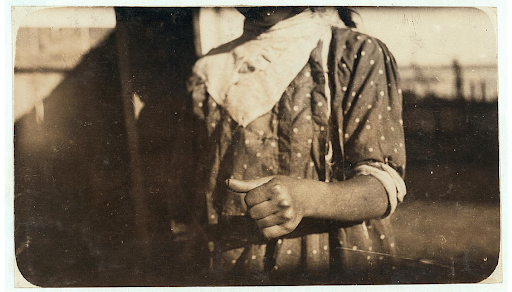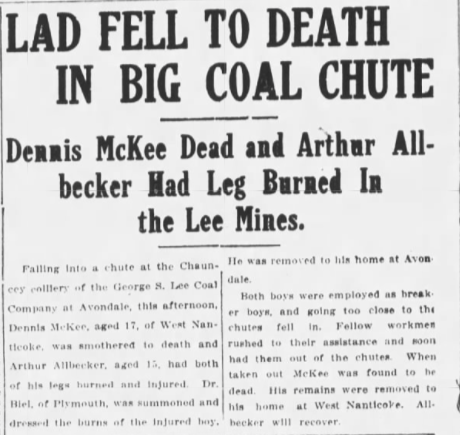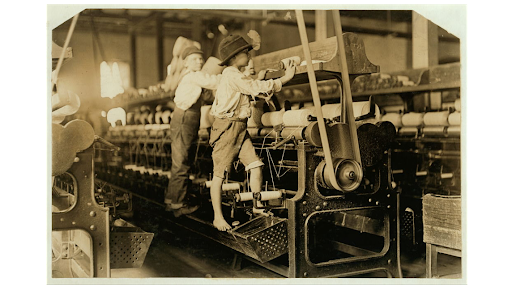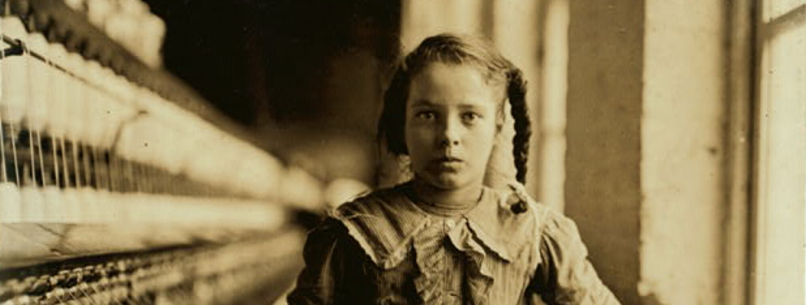
The Photos That Shocked America:
The Horrors of Child Labor Exposed by Lewis Hine
The Industrial Revolution:
The Good and The Bad
The late 1700s and early 1800s, began the Industrial Revolution. The new technologies caused demand for factory labor. After the Civil War families in the south were impoverished, and the cotton mill industry helped raise families out of poverty. Everyone, even children, had to work in the cotton mills to support their families.
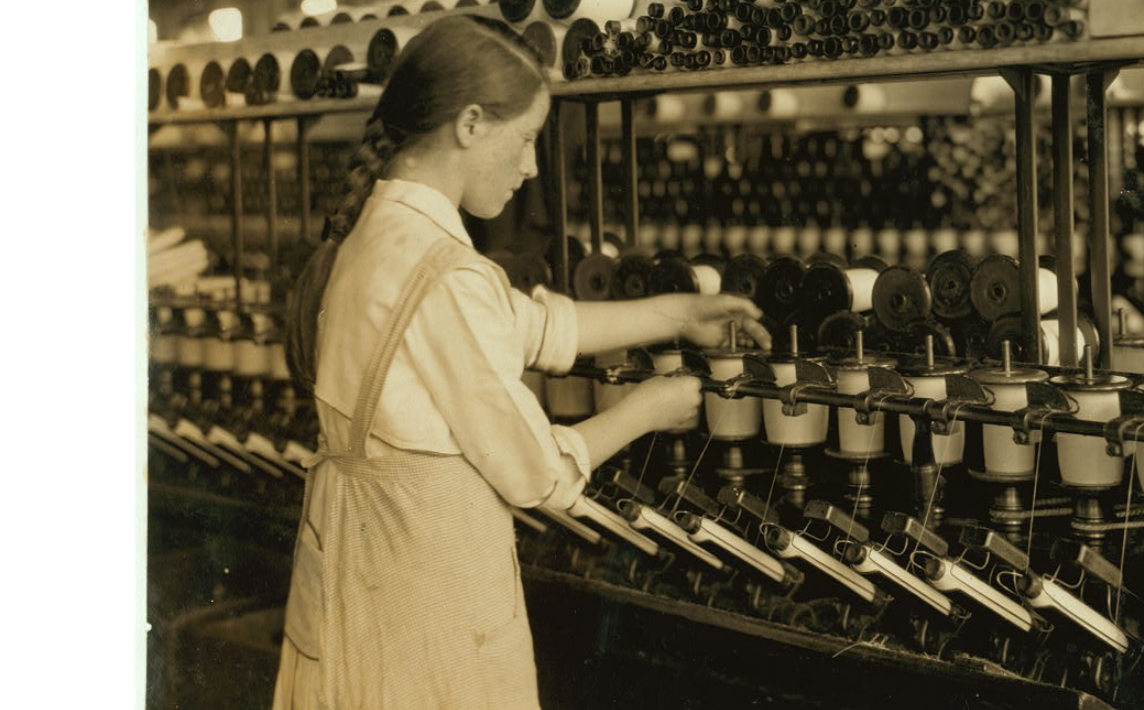
14 year old Spooler tender. 1916 July 10, National Child Labor Committee collection, Library of Congress, Prints and Photographs Division.
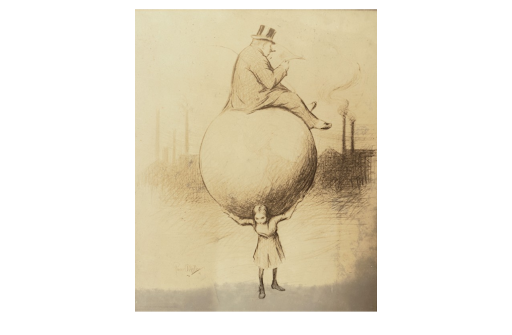
Girl carrying a globe with a fat businessman sitting on top, drawing, ca. 1912, Prints and Photographs Division Library of Congress.
“If I could tell the story in words, I wouldn’t need to lug around a camera.”
- Lewis Hine, 1912
Businesses hired children to work unskilled jobs for lower wages than adults. Their tiny hands made them perfect for handling small parts and tools.
“Whether it be a painting or photograph, the picture is a symbol that brings one immediately into close touch with reality. In fact, it is often more effective than the reality would have been, because, in the picture, the non-essential and conflicting interests have been eliminated.”
- Lewis Hine, 1909
While companies were making money off child labor, the kids were suffering. Children who worked in coal mines or cotton mills contracted diseases such as tuberculosis and bronchitis. Several children received severe injuries or died while working under these horrible conditions.
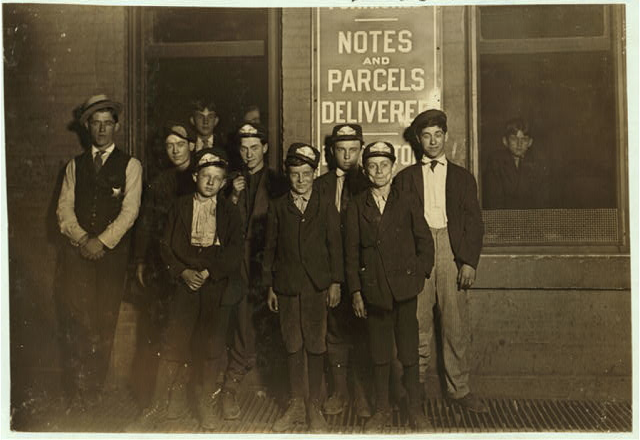
Night Shift A. D. T. Messengers, 10:00 P.M, 1908 August, National Child Labor Committee collection, Library of Congress, Prints and Photographs Division.
“Perhaps you are weary of child labor pictures. Well, so are the rest of us, but we propose to make you and the whole country so sick and tired of the whole business that when the time for action comes, child-labor pictures will be records of the past.”
- Lewis Hine, 1909
Triangle Shirtwaist Factory Fire
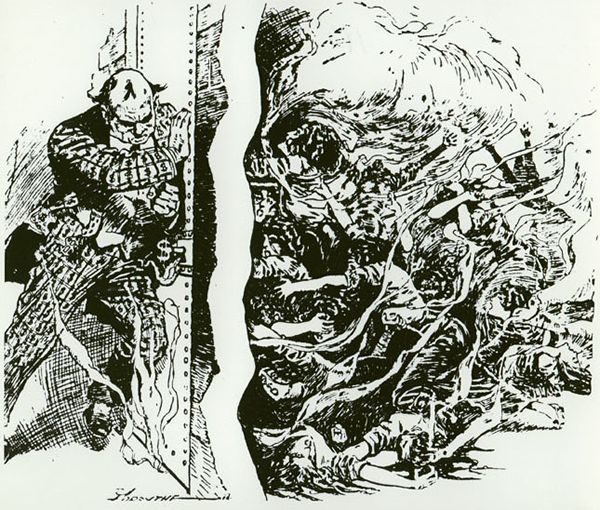
Cartoon from the New York Evening Journal, March 31, 1911.
In 1911, the Triangle Shirtwaist Factory Fire killed 146 young women. This horrific accident was avoidable if stricter workplace regulations were in place. This tragedy sparked the fight for workplace rights.
“The floods of water from the firemen’s hose that ran into the gutter were actually stained red with blood. I remembered their great strike of last year in which these girls had demanded more sanitary conditions and more safety precautions in the shops. These dead bodies were the answer.”
- William G. Shepherd, 1911
Labor Movement
The Triangle Shirtwaist Factory Fire was a visible event involving child labor, and images appeared in newspapers all over the United States. The images horrified people and played on their emotions. Later these same people would be labor activists. Unions formed wanting lower hours, higher wages, and safer working conditions. The Triangle Shirtwaist Factory Fire gave momentum to the labor movement.
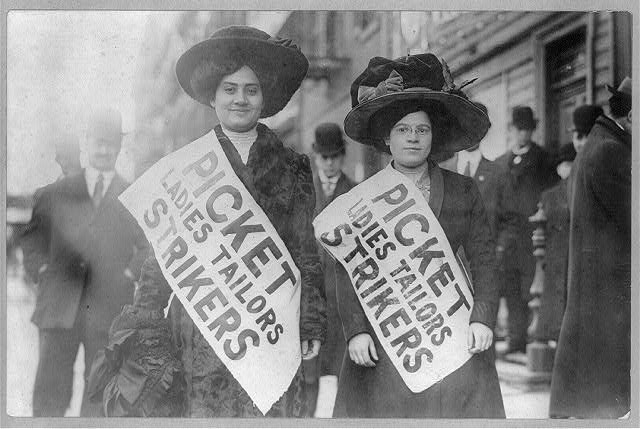
Strikers outside their workplace, February 1910.
In 1904, Florence Kelley founded the National Child Labor Committee (NCLC) because of these atrocities. Kelley formed this organization to end child labor alongside the Child Welfare League and the National Consumers League.
Vox. “These Photos Ended Child Labor in the US.” YouTube, June 28, 2019.
Header Photo Credit: Ten Year Old Spinner in N. Carolina Cotton Mill, 1908, National Child Labor Committee collection, Library of Congress, Prints and Photographs Division.
